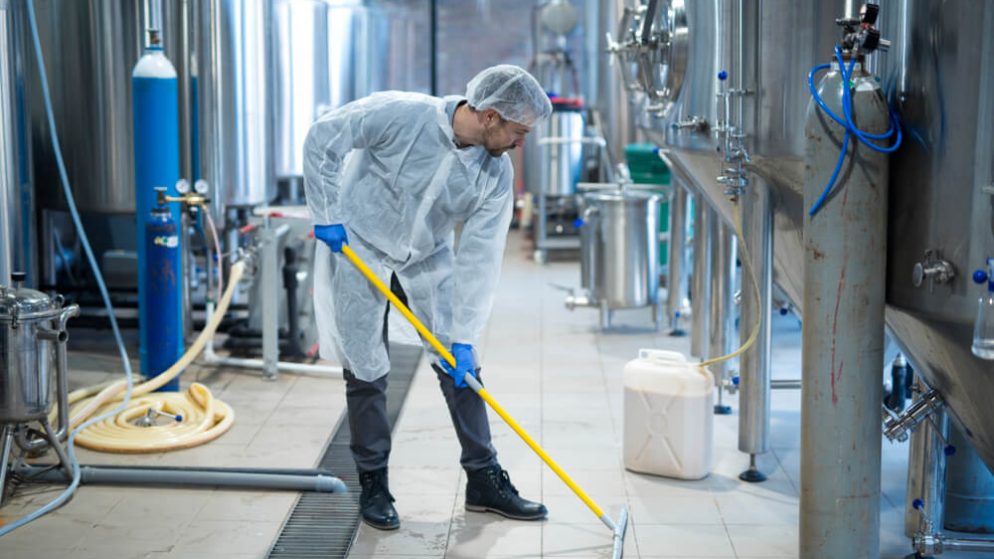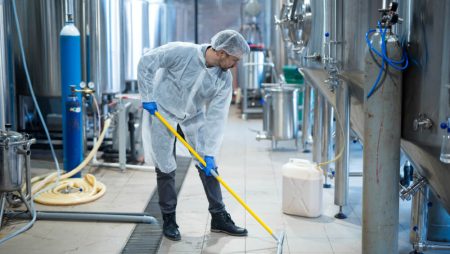



Get new exclusive access to healthcare business reports & breaking news




Healthcare facilities generally have a high volume of foot traffic, which means cleaning and disinfecting such properties are high on the priority list. It’s prudent to note that even though those tasks go hand in hand (often labelled a ‘two-step process’), cleaning and disinfecting are two different processes.
Cleaning refers to the physical removal of germs, such as viruses and bacteria, dirt, and grime from surfaces using a detergent and water solution. A detergent is a surfactant that’s designed to break up oil and grease and works in conjunction with water. But while cleaning does get rid of germs, it doesn’t kill them.
Disinfection, on the other hand, involves using chemicals to kill infectious fungi, viruses, and various bacteria on hard environmental surfaces.
The reason they’re called a two-step process is because cleaning should precede disinfecting. Disinfectants don’t remove dirt and grime from surfaces; in fact, they’re usually sticky in nature and will adhere to dirt. So it’s imperative to clean first and disinfect second.
If you’re running a healthcare facility, here’s a guide to cleaning and disinfecting your establishment to make it safe for patients and staff alike:
First and foremost, there should be an area for healthcare workers to clean their hands and disinfect themselves before they start their shift. This would prevent them from unknowingly bringing outside pathogens into the workplace.
Reusable patient care equipment such as blood pressure cuffs and stethoscopes that are visibly soiled or contaminated should be cleaned thoroughly using a hospital-grade disinfectant before it’s utilized again. That kind of chemical also has to be used for items such as bed sheets, pillow cases, and towels regardless of the visibility of dirt.
You can check out PathoSans Direct and similar companies for the right disinfectants to use in your cleaning routines. You have to be sure that the product you go for can deliver on its promises.
An ultraviolet (UV) light disinfection system is a perfect example of advanced technology that’ll help you maintain your healthcare facility. The light passes through the air and penetrates significantly into bedding, carpets, desktops, and other surfaces that are touched frequently. It kills up to 99% of bacteria and viruses on hard surfaces.
Steam cleaners use hot, pressurized water and steam to clean and remove dirt from any surface in your establishment, including walls, floors, counters, and janitorial closets. You can choose between commercial steam cleaners or truck mount systems depending on how much cleaning you need done as well as the size of your facility.
Make sure to use a good cleaning solution with your machine so you won’t leave behind any dirt or chemicals.
There are companies today that design and manufacture robots that can be programmed to spray and clean the air as well as surfaces wherever they pass through. They’re completely automated, and some of them use a combination of UV light and air filtration, which would take your disinfection efforts to another level. These robots are among the best technologies for healthcare facilities to consider, especially in the wake of the coronavirus.
There are surfaces that are often touched by healthcare personnel and patients. These include everything from door handles and light switches to countertops and telephones.
Disinfectant wipes are ideal for those areas as they don’t require a lot of water to be cleaned. They can be thrown away after use, which makes them highly convenient.
Reusable medical equipment such as hand-held exam lights and call buttons should be cleaned thoroughly and routinely disinfected in accordance with the manufacturer’s instructions. This is a must since those objects are used by more than one person.
Sensitive instruments that aren’t heat-tolerant or that would be damaged when exposed to steam may require additional processing. Those items should be placed in a container of disinfectant and allowed to soak for the required length of time (refer to the manufacturer’s manual).
Special handling may also be needed to ensure that all the surfaces of the items are exposed to the disinfectant. This measure applies to objects such as endoscopes, used catheters, and drainage bags.
Healthcare personnel should wash their hands with soap and water before and after touching patients, blood, or body fluids. They have to do the same thing between patient contact when moving from one room to another, during transport of a patient, and upon leaving a patient’s room. Handwashing after removing gloves and just before performing other activities that might transmit microorganisms to other patients is important as well.
There are health workers who are allergic to the antimicrobial chemicals that are widely used in healthcare facilities to kill germs on the hands. Those would include ethanol, isopropanol, and benzalkonium chloride.
Allergic staff members can opt for alcohol-based products or a solution containing povidone iodine. Povidone iodine solution has been proven to be more effective than antimicrobial cleaning products. It works in the same way as alcohol-based chemicals, but it can kill certain viruses and bacteria that alcohol-based products can’t. What’s more, it’s safe to use for all, including those with allergies.
Biological indicators are small pieces of paper that change color when they come in contact with a clean surface. They can be used to check whether manual cleaning was effective and whether any degreasing chemicals are needed.
These should be periodically used to determine the efficacy of the cleaning solutions you go for and to ensure that they’re up to standard.
Air vents need to be regularly cleaned because they tend to collect a lot of bacteria from the air that circulates through them after being in contact with healthcare workers and patients. The bacteria may get temporarily lodged in the vents and be overlooked by cleaning personnel. The air ventilators also need to be cleaned periodically to avoid dust buildup and maintain steady air filtration.
It’s important to stay up to date with the cleaning and disinfection protocols in your area. The healthcare industry is evolving every day, so new and improved methods of keeping healthcare personnel and patients safe are constantly being created. Various technologies are being developed for the same purpose, too. Try any of them to find out what works best for your facility.